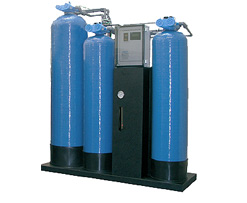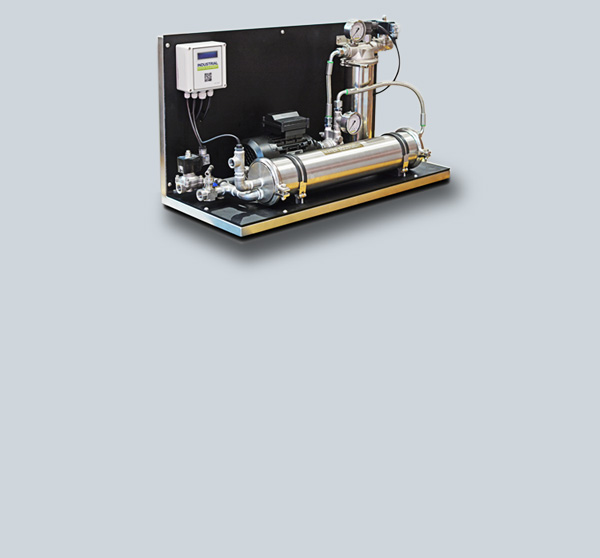HOME | WATER RECYCLING | METAL RECOVERY
Metal Recovery
 Industrial water equipments approach to waste metal reduction is to recover process metals from effluent to reuse. For example materials used in metal finishing processes can be effectively recovered using techniques such as;
Industrial water equipments approach to waste metal reduction is to recover process metals from effluent to reuse. For example materials used in metal finishing processes can be effectively recovered using techniques such as;
Dragout, Evaporation, Reverse osmosis, Electro dialysis, Electrolytic recovery.
Commonly used Metal Recovery Processes
- Gold recovery
- Silver recovery
- Copper recovery
- Cyanide recovery
- Chromium recovery
- Zinc recovery
- Nickel recovery
- Lead recovery
- Cobalt recovery
- Manganese recovery
- Mercury recovery
- Palladium recovery
However there are many more metals that can be removed with our recovery processes.
Dragout recovery explained
Dragout recovery is a simple technology used by metal finishers to recover plating chemicals. It involves a process using drain boards, drip tanks, fog spray tanks or drag out tanks separately or in combination, to capture plating chemicals dragged out of plating tanks from parts being plated. Drain boards are widely used throughout the industry to capture plating solutions. Boards are suspended between process tanks and are usually constructed of plastic or Teflon coated steel. Solutions simply drip off the coated parts and back into their retrospective tanks. Drip tanks recover process chemicals by collecting dragout into an empty tank, from which it is usually returned to the process as required. Fog spray tanks recover plating chemicals clinging to parts by washing them with a fine water mist. The solution collected in the bottom of the tank is returned to the process tank as required. The added water can help to offset evaporative losses from the process tank. Dragout tanks are essentially rinse tanks. Dragout chemicals are captured in a water solution, which is returned to the process tank as required.
Evaporative recovery explained
Evaporative recovery or evaporation is a widely used metal salt recovery technique. In the evaporation process, plating chemicals are concentrated by evaporating water from the solution. Evaporators may use heat or natural evaporation to remove water. There are essentially two types of evaporators; those that operate at atmospheric pressure and those that operate under a vacuum. Atmospheric evaporators are the most commonly used units. They are open systems used to process heat and warm air to evaporate water. These evaporators are relatively inexpensive, require low maintenance and are self-operating. Under the right conditions they can evaporate water from virtually any plating bath or rinse. Vacuum evaporators are closed systems that use steam heat to evaporate water under a vacuum. Like atmospheric evaporators they require low maintenance and are self-operating.
Reverse Osmosis explained
Reverse Osmosis or r/o recovers plating chemicals from rinse water by removing water molecules with a semi permeable membrane. The membrane allows water molecules to pass through, but blocks metals and other additives. A reverse osmosis system will work on most plating lines or baths. Diluted or concentrated solutions are circulated through the membrane at pressures greater than aqueous osmotic pressure. This action results in the separation of water and metals or chemicals. Please view our reverse osmosis link for more information. Electro dialysis explained;
Electro dialysis units recover plating chemicals differently from the other recovery units listed. In electro dialysis electromotive forces selectively drive metal ions through an ion selective membrane. The membranes are constructed from plastic and have either anionic or cationic characteristics.
Electro dialysis units are constructed from plate and frame technology very similar to filter presses.
Alternative layers of anionic and cationic membranes are placed between two electrodes. The plating or rinse solution to be recovered known as electrolyte circulates past the units electrodes. This produces hydrogen and oxygen. Positive ions travel to the negative terminal and negative ions travel to the positive terminal.
The electrolyte also provides the overall conductivity to the cell.
In some more advanced units the polarity of the unit is reverse occasionally to protect the membrane from fouling.
The electro dialysis technology is compatible with most plating baths and the design of the unit is dependent upon the rinse water flow rate and concentration.
Electrolytic recovery systems explained
Electrolytic recovery or er is the oldest method of metal recovery. Metal ions are plated out of solution electrochemically by reduction at the cathode. The are basically two types of cathodes used for this process. Metal cathode known as electro winning and high surface area cathodes known as hsac. Both of these technologies are very successful on plating metals such as gold, zinc, cadmium, copper and nickel. Electrolytic metal recovery can be used with most plating baths. The amount of metal to be plated per square meter of cathode determines the electrolytic recovery units design capacity With this in mind the volume and concentration of plating dragout greatly influences system design and size.



